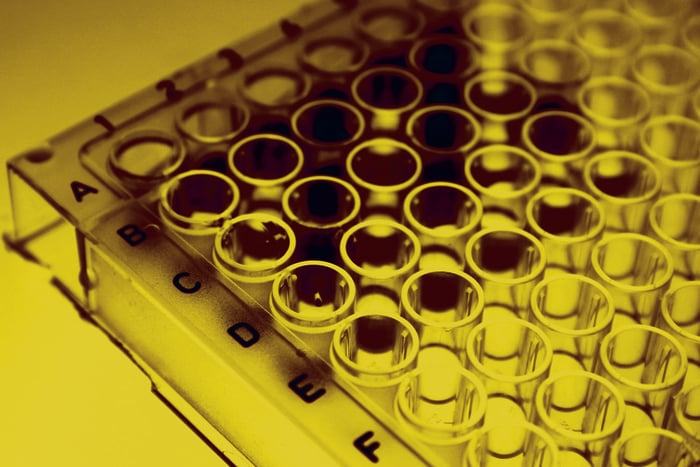The Sandwich Enzyme-Linked Immunosorbent Assay (ELISA) is one of the most efficient laboratory procedures used in detecting the presence and measuring the concentration of a target antigen in a completely unknown sample. Its superior sensitivity and extremely robust nature makes it a great diagnostic tool for medical purposes and is especially useful in identifying potential food allergens and/or testing for certain drugs.
The Protein Man

Recent Posts
The Sandwich ELISA: Process and Practical Applications
Topics: Assay Development (ELISA)
How to Improve Spot Resolution During 2D-Electrophoresis
While several protein separation technologies have been developed in recent years, two-dimensional gel electrophoresis remains one of the most popular techniques used in the field of proteomics. This is not surprising since 2D PAGE is routinely used to accurately analyze the individual components of even the most complex proteins, and can simultaneously resolve more than 5000 proteins (depending on the gel size used).
Topics: Protein Electrophoresis
Recombinant Protein Expression Systems: Pros & Cons
Recombinant production of proteins involves transfecting cells with desired gene in a DNA vector. The gene then translates into a protein using host cellular machinery. These expressed proteins can then be extracted by lysing the cells ans subsequent purification steps. Both Prokaryotic and Eukaryotic expression systems are widely used . Each system has its own advantages and disadvantages. A particular expression system is chosen depending on economic and qualitative aspects, such as the type of protein, function and desired protein yield.
Topics: Protein Purification
Cold-Shock Keeps Recombinant Proteins out of Inclusion Bodies
The cloning and expression of proteins to product recombinant proteins is a hugely popular technique that allows for the production of copious quantities of protein that almost mimic native proteins. Although a popular and useful technique, one of the main reasons for its use can also be a drawback. In some cases, over-expression of the recombinant protein leads to an accumulation of misfolding protein that aggregates and is sequestered into inclusion bodies. The purification of inclusion bodies is time consuming, involves harsh denaturants, detergents and other chemicals, resulting in damaged and denatured proteins. If a researcher is successful in extracting these proteins then they must invest more time and effort to refold the denatured proteins. For this reason, researcher's want to prevent their recombinant proteins from ending up in inclusion bodies.
Topics: Protein Extraction







